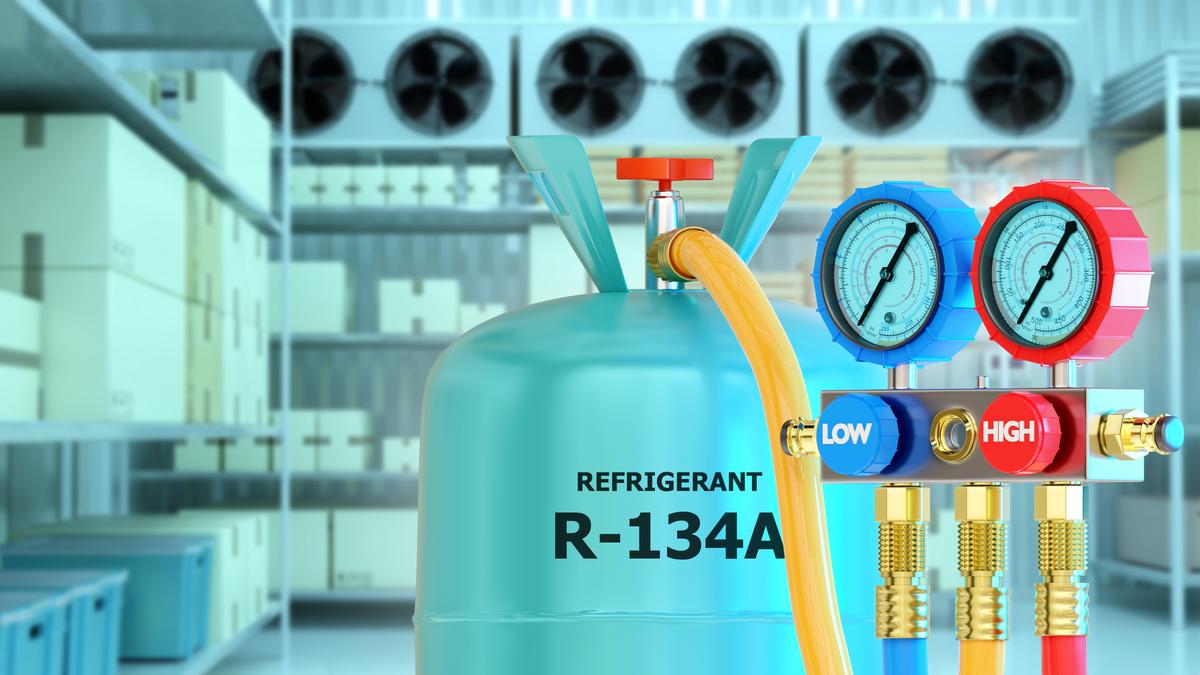In refrigeration and air conditioning, the name R134a is no stranger. This chemical compound, also known as tetrafluoromethane, has become a staple in cooling systems around the globe. As we delve into the depths of this article, we will unravel the startling truths surrounding R134a refrigerant that has remained shrouded for far too long.
What is R134a Refrigerant?
R134a refrigerant, also known as tetrafluoromethane, is a chemical compound used as a cooling agent in various applications, including air conditioning and refrigeration systems. It gained popularity as an alternative to older refrigerants, such as chlorofluorocarbons (CFCs) and hydrochlorofluorocarbons (HCFCs), due to its relatively lower impact on the ozone layer. R134a does not contain chlorine atoms, which are known to contribute to ozone depletion.
When was R134a Banned?
R134a refrigerant has not been universally banned, but its usage has been restricted in certain applications and regions due to its high global warming potential (GWP). For example, in the European Union, regulations known as the F-Gas Regulation have been implemented to phase down the use of fluorinated gases with high GWPs, including R134a, in an effort to reduce greenhouse gas emissions. These regulations have led to limitations on the use of R134a in new vehicles’ air conditioning systems.
The Genesis of R134a Refrigerant
In the late 20th century, concerns over the environmental impact of refrigerants used in various cooling systems led to a quest for alternatives. R134a emerged as an alternative, offering a more eco-friendly option than its predecessors. Its chemical composition, devoid of chlorine, marked a significant departure from the detrimental chlorofluorocarbons (CFCs), notorious for their role in ozone depletion.
Environmental Impact and Regulatory Measures
Despite its environmentally friendly profile compared to CFCs, R134a is not without its controversies. Over the years, studies have highlighted its high global warming potential (GWP), meaning it can contribute to the greenhouse effect and climate change. In response, regulatory bodies around the world have taken steps to limit its use in certain applications, particularly in new automotive air conditioning systems.
Versatility in Applications
R134a’s versatility has earned it a place in various industries beyond air conditioning. From refrigeration units to pharmaceutical storage, its properties as a non-corrosive, non-flammable, and efficient heat-transfer medium has made it a go-to choice. The automobile industry, in particular, has utilized R134a for years in automotive air conditioning systems due to its excellent cooling capabilities.
How Much is R134a in Dubai?
The price of R134a refrigerant in Dubai, or any other location, can vary based on factors such as market demand, supply, and regional regulations. As of now, estimated costs can range from 300 to 800 AED. It’s recommended to check with local suppliers, distributors, or HVAC professionals in Dubai to get accurate and up-to-date pricing information for R134a refrigerant.
Can R134a Replace R410A?
R134a and R410A are two different types of refrigerants used in cooling systems. While R134a is commonly used as a replacement for older refrigerants with higher ozone-depleting potential, R410A is often used as a substitute for R22, which has been phased out due to its ozone-depleting properties. R410A has a lower GWP compared to R134a, making it a better choice in terms of environmental impact. However, R410A typically requires different equipment and design considerations due to its higher operating pressures. Before considering a replacement, it’s recommended to consult with HVAC professionals to determine the suitability and compatibility of these refrigerants for your specific system.
The Performance Paradox
While R134a’s performance in cooling applications is commendable, a paradox emerges when considering its environmental implications. Its GWP, though lower than some of its predecessors, is still substantial. As the world grapples with the urgency of climate change, this paradox underscores the complex decisions faced by industries reliant on cooling systems.
Alternatives on the Horizon
In response to the environmental concerns associated with R134a, researchers and engineers have been tirelessly developing alternative refrigerants. Hydrofluoroolefins (HFOs) and hydrofluorocarbons (HFCs) are among the contenders, each boasting lower GWPs and reduced environmental impacts. However, the transition to these alternatives is not without challenges, as they often require system modifications and compatibility testing.
Safety Considerations
Beyond environmental considerations, safety is a paramount concern in refrigerant usage. R134a, while generally safe under normal conditions, can pose risks when exposed to open flames or high temperatures. Like any chemical substance, proper handling and storage are imperative to prevent accidents. This underscores the importance of adhering to safety guidelines and regulations.
The Road Ahead
As industries continue to evolve and adapt, the role of R134a refrigerant remains a subject of intense scrutiny. Its journey from a groundbreaking alternative to a subject of environmental concern serves as a cautionary tale of unintended consequences. Balancing performance, safety, and environmental impact will be pivotal in shaping the future of cooling systems.
Conclusion
In the realm of refrigerants, the story of R134a is one of transformation and contradiction. While hailed as an improvement over ozone-depleting compounds, its substantial GWP and environmental repercussions highlight the complexity of sustainable choices. As technology advances and awareness grows, industries must navigate the delicate balance between innovation and environmental responsibility. The shocking facts about R134a refrigerant serve as a reminder that progress often comes with its own set of challenges, urging us to strive for solutions that lead to a healthier planet without compromising efficiency.

